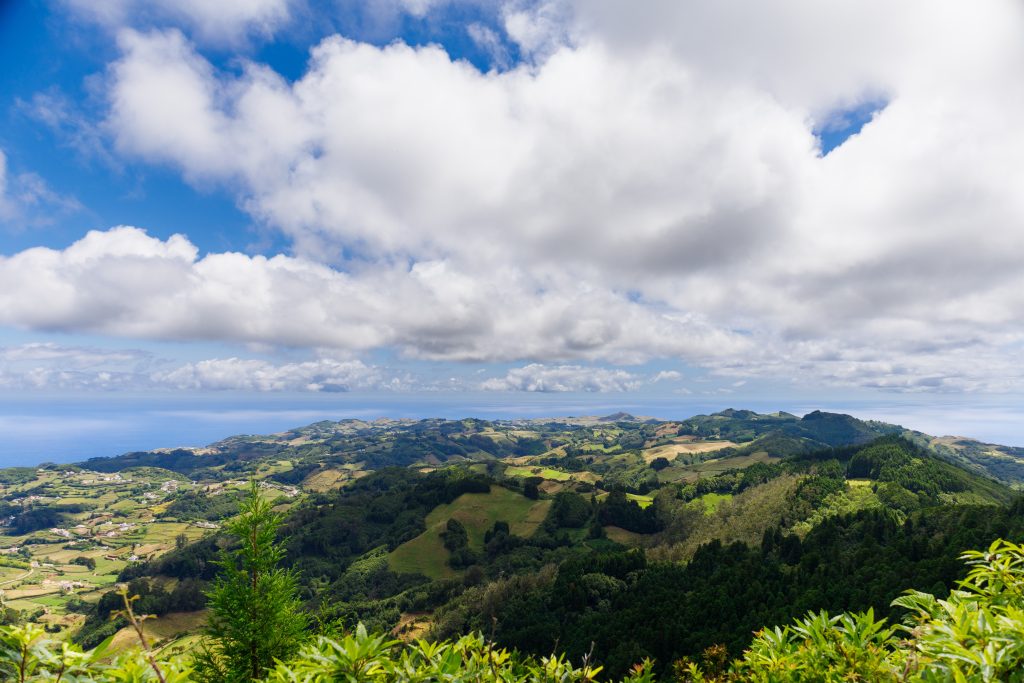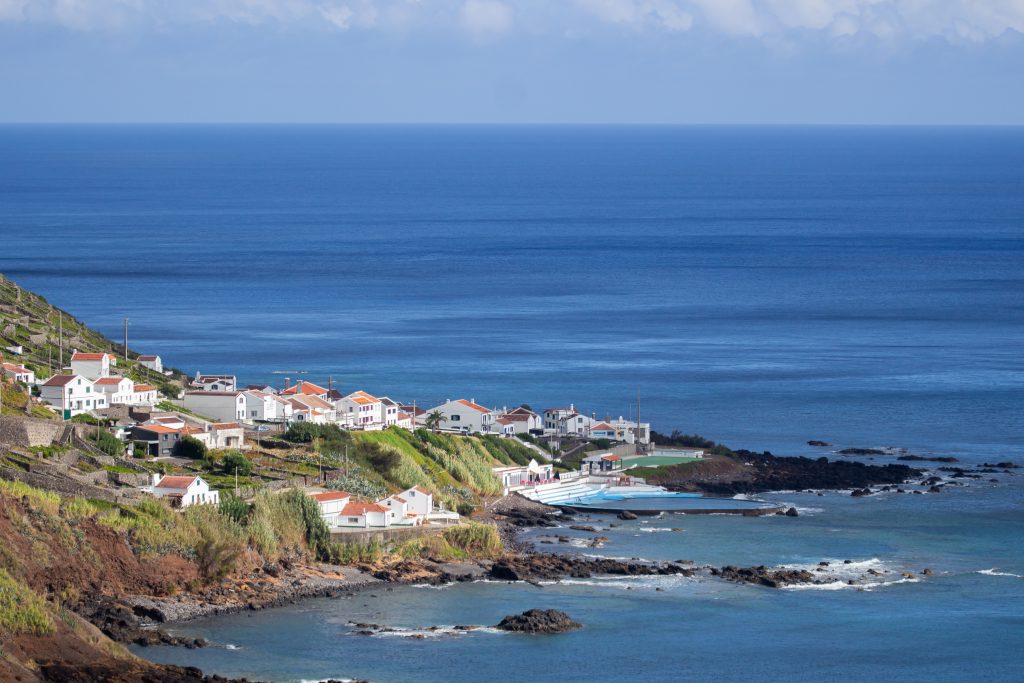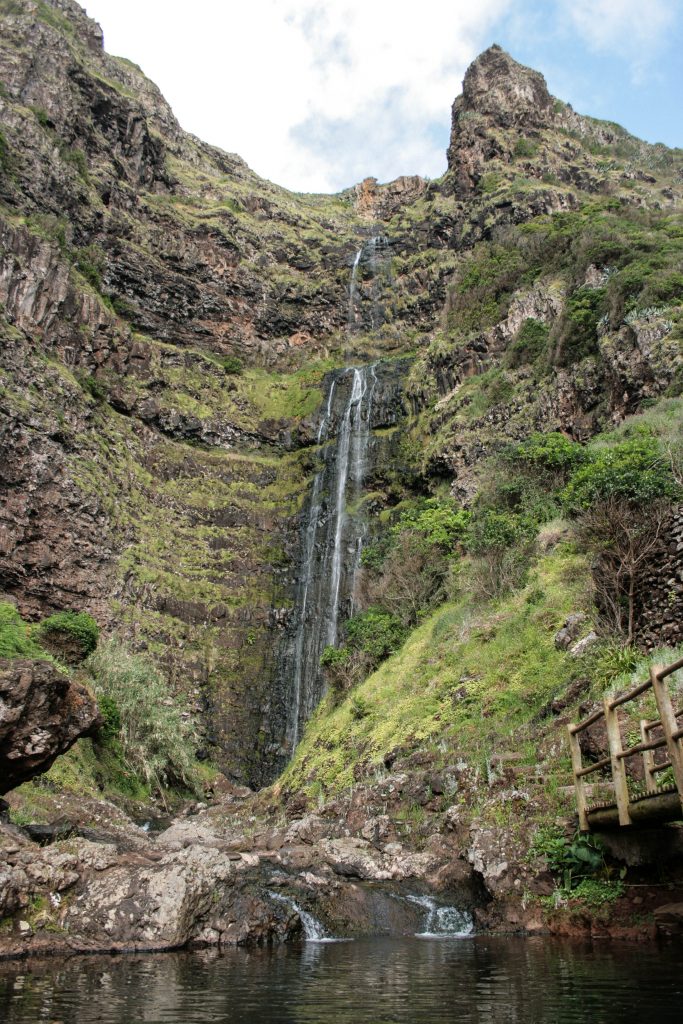Away from the tourist trails and high-season rush, Christine Fadden journeys to Santa Maria, where locals are reclaiming time, craft, and a deeper sense of belonging.
By Christine Fadden
Santa Maria, the easternmost island of the Azores, remains unhurried throughout the year – making it an especially rewarding destination in the low season. Between late September and mid-May, its gifts multiply tenfold: fewer crowds, lower prices, and a deeper connection with the land, sea, and locals. Indeed, the people of Santa Maria – os Marienses– are reason enough to visit. Ask any islander to describe themselves and their neighbours, and you’ll often hear: helpful, friendly, resourceful, open-minded. “We love nature,” is a familiar refrain.
Tânia Bairos, who left the island to pursue medical training and a career as a family doctor, returned years later to raise her son. “Children get to have a childhood here,” she says. “They may not have what children in Lisbon or Chicago have, but the other night, I turned off all the lights, opened the windows, and my ten-year-old joined me to gaze at the stars. He said, ‘I’m glad we live here.’” She places her hand on her heart. “We work, drive our kids to school, attend events – but life happens in between those things. We try to take the time to notice it. To find balance.”
Ceramics plays a part in that balance for Tânia, who joined forces with three other women – Márcia Santos, Leonor Pimentel and Sofia Rohena – to form SÓ Atelier. “The first time I touched Santa Maria’s endemic clay, I fell in love with it. I work with this material to preserve our island’s heritage, to foster appreciation for it, and to keep it sustainable.” Márcia, who runs her 7 Vidas fabric and furniture studio within SÓ, agrees: “I learnt to crochet with my grandmother. It’s important to me to mend, repurpose, and reuse.” Living on an island cultivates a deep awareness of beauty, fragility, and the importance of reducing waste. “Visitors who take part in a SÓ workshop experience this awareness firsthand,” adds Sofia, both a ceramicist and an air traffic controller. “They meet locals and take something meaningful home.”
Tom Gendler and Catherine Swanson Gendler share this same ethos in their lives and their businesses – MONK Surf Shop and Coffee Bar, and Neon Joyride Jewellery. Their slow-food vegan café serves a locally sourced, seasonal menu. “In the low season, we plan for fifteen plates a day,” says Tom. “We’re not chasing volume. If we sell out at lunchtime, that’s it – we’re done. We have nearly zero food waste.” Their approach to surfing is just as considered. “Portugal has seen the effects of overdeveloped surf tourism,” Tom adds. “We don’t want that. We keep it low-key, in tune with the island’s rhythm.” Experienced surfers can rent boards at MONK, grab swimwear and wax, and get Tom’s insight into the day’s best breaks.
“Beach kids” since childhood, the couple discovered Santa Maria in their late thirties, seeking to escape the corporate grind. “On my first visit,” Tom recalls, “I was hit by the scent of eucalyptus the moment I stepped out of the airport. I just knew – this was it. After we moved here, we instinctively slowed down. Even little things, like drying laundry outside, force you to.” Neon Joyride actually came first – born of Catherine’s fascination with the stones she found on beach walks. “I started making jewellery from them and selling it online,” she says. “But then I realised – I was back behind a screen in this gorgeous natural setting. We were detoxing from the corporate world, grounding ourselves, enjoying the quiet – but we missed real community.”
To bring local artists “out of the woodwork”, they opened what Catherine calls “kind of a gallery space” – now home to SÓ Atelier. Then came MONK and a physical home for Neon Joyride. “In low season, so many creatives come through. You can disconnect, work, and be inspired here. Winter’s the time to make, summer’s the time to share. It’s a good balance.” Their focus on community and sustainability goes further. During one of the island-wide beach clean-ups that Neon Joyride organises between April and November, over 1.2 tonnes of rubbish were collected. Some of that waste was later upcycled in SÓ workshops, where participants transformed ocean plastics into colourful seascape mosaics.
It’s all a loop. Santa Maria’s 78.6-kilometre Great Route trail winds through lichen-draped forests, past red-earth desert, and into quiet coastal villages. Along the way, small sleeping huts provide shelter. Pause for a swim in the sea pools at Baía de São Lourenço or Baía da Maia, and admire the ancient wine terraces that have been lovingly restored. In Santo Espírito, the Santa Maria Handicraft Cooperative bakes the island’s signature “ear” biscuits – watch them being rolled, snipped and shaped in the kitchen before tucking a few into your rucksack with a loaf of warm bread.
For travellers wanting to explore further afield, Marco Pacheco of Paraíso Radical rents bikes, scooters, ATVs and kayaks, and also offers private jeep tours. “We don’t mix strangers. We go with your group – your family, your friends – and take our time. Start at nine, finish when we finish. Want to swim beneath Cascata do Aveiro? Swim! There’s no rush. Be free.” Marco also runs Praia Formosa Camping, a tranquil park nestled above the island’s best-known sandy beach. His six renovated bungalows sleep three and include a kitchen, Wi-Fi, heating and air conditioning. Tent campers have access to electricity, a shared kitchen, barbecue grills and showers. The on-site bar, open to the public, serves Portuguese beer and wine, and burgers made with locally raised beef, lamb and sausage. “Come in the low season,” Marco says. “The views are always here – and always beautiful.” He hopes guests return home saying, “We never imagined Santa Maria was so big. And with Marco’s help, we saw more than we ever expected.”
For many islanders, living away from the sea simply isn’t an option. “I’ll never not live near the ocean,” says surfer and bodyboarder Lourenço Rego. “I’ve grown up playing in it, learning to read and respect it – just like my father did.” Artist Leonor Pimentel adds, “I love listening to the rocks tumble as the tide rolls in and out.” Henrique Simões, who left mainland Portugal after feeling “like an ant with no purpose”, moved to Santa Maria and found meaning. He turned his love of canyoning and coasteering into Bootlá, a tour company whose name means “Let’s go!” “Sharing is what I do,” Henrique says. “I tell stories – about our cows, our fishing, our architecture – and people open up. Guiding visitors gives me new ways of seeing. And I watch how quickly they understand: we live in harmony with the land here – not superficially – and it dawns on them that it’s possible to live differently.”
Santa Maria isn’t a place for “a scene” – but if it’s scenery you’re after, you’ll be richly rewarded. Accommodation prices drop in late September, and some businesses close briefly from late December to January. SATA and TAP reduce fares and flights during this period, so it’s worth checking schedules in advance. With a bit of planning and attention to local social media, low season travellers can expect to be warmly welcomed – and profoundly restored.



